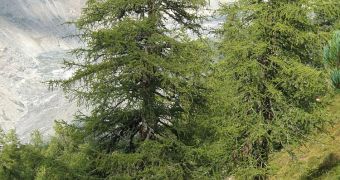According to the conclusions of a new study by ecologists at the United States Geological Survey (USGS), trees do not slow down their growth rates as they get older. In fact, the paper demonstrates, their growth continuously accelerates, enabling them to capture and store even more carbon dioxide.
This study is one of the first to suggest that cutting down older forests is more detrimental to the environment than cutting trees that are younger than a century or so. All trees capture significant amounts of CO2 from the atmosphere, but older ones may be better at it, experts say.
Until now, popular wisdom dictated that trees slow down their growth as they reached maturity. The USGS-led international team behind the new research measured a total of 673,046 trees belonging to 403 species around the world, and determined that the old conclusions were entirely wrong.
Details of their investigation were published in the January 15 issue of the top scientific journal Nature. The lead author of the new paper was USGS forest ecologist Nate Stephenson. He was also the leader of the team that conducted the measurements, which traveled six continents for this research.
“This finding contradicts the usual assumption that tree growth eventually declines as trees get older and bigger. It also means that big, old trees are better at absorbing carbon from the atmosphere than has been commonly assumed,” Stephenson explains.
In some extreme cases, the study found, very old and very large trees were able to grow so much in a single year that they stored an amount of CO2 equal to that stored by an entire regular-sized tree throughout its lifetime. The following year, the large trees stored even more of this dangerous chemical.
“In human terms, it is as if our growth just keeps accelerating after adolescence, instead of slowing down. By that measure, humans could weigh half a ton by middle age, and well over a ton at retirement,” the team leader explains.
The new data seem to indicate that the role of large trees in forest carbon dynamics has been largely underestimated to date. Cutting down the oldest and largest trees can have significant implications on the atmosphere, as all the CO2 the tree stored throughout its centuries-long life is released back into the air via a process of decomposition.
“But our findings do suggest that while they are alive, large old trees play a disproportionately important role within a forest’s carbon dynamics. It is as if the star players on your favorite sports team were a bunch of 90-year-olds,” USGS expert and study coauthor Adrian Das concludes.

 14 DAY TRIAL //
14 DAY TRIAL //